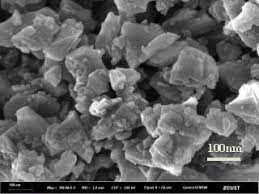
Diamond Nanopowder/ Nanoparticles are single crystal diamond that range anywhere from 5_500nm.
Diamond is the hardest materials. Diamonds has been considered for use in several application nanoparticles
are gray spherical high surface area carbon
Properties
1. Appearance: Grey nanopowder
2. Electrical Resistivity
3. Relative magnetic susceptibility
4. Initial oxidization temperature
5. Morphology: spherical
Applications
1. Thermal
2. Electrochemical
3. Dental care
4. Hair and nail care
5. Nanodiamonds between biocompatibility and cytotoxicity
6. High precision polishing
7. Additives in Polymer
8. Biosensors
9. Integrated circuit substrates
Drug delivery
Diamond Nanopowder Nanoparticles have attracted remarkable scientific attention for bioimaging and
therapeutic applications owing to their low toxicity with many cell lines, convenient surface properties and
stable fluorescence without photobleaching. Nanodiamonds has been explored for bioimaging and drug
delivery tracing. The interest in nanodiamonds’ biological/medical application appears to be continuing with
enhanced focus. The aims of these materials in drug delivery include specific drug targeting/delivery, reduced toxicity while maintaining therapeutic effects, and the development of new and safer medicines. The nanoparticles are developed for bioimaging or drug delivery and are used as a carrier or imaging agent
Thermal Applications
The high thermal conductivity can be employed for Diamond Nanopowder Nanoparticles applications as well.
Diamond Nanopowder Nanoparticles is a suitable additive for coolants to improve the thermal conductivity of
cooling media. An addition of only 0.3% to cooling oils for large transistors causes a 20% growth of thermal
conductivity. Diamond nanoparticles efficiently enhances material’s ability to dissipate heat. Consequently,
using diamond nanoparticles in pastes, glues and substrates provides an exceptional opportunity of avoiding
burnout, increasing speed of active elements, reducing the size of devices, and increasing their reliability and
durability.
Electrochemical Applications
Due to its physicochemical stability, large electrochemical potential window, and chemical sensitivity diamond is
an excellent candidate for electrochemical applications. Diamond nanoparticles show the most stable response
among electrodes by far, and do not require extensive pretreatment to regenerate the electroactive surface. ND
electrodes/microelectrodes have been applied to biological system as biosensors.
Dental care
Diamond Nanopowder Nanoparticles may be formulated as a dental material. The dental material can be
formulated for use as a filling, veneer, reconstruction. The Diamond Nanoparticles particles can provide
additional mechanical strength, as well as an appearance that approximates natural enamel. Alternatively, the
remedial healthcare composition can be formulated as toothpaste including an acceptable carrier and a plurality
of Diamond Nanoparticles particles. Diamond Nanoparticles added toothpaste has another advantage, as
Diamond Nanoparticles is known to cure gum disease.
Hair and nail care
Shampoo can include an acceptable carrier and Diamond Nanoparticles particles. Suitable bubbling agents can
be included to increase contact of unsaturated NDs with a biological material. The effect of NDs in skin
cleansers, deodorants, shampoos, soaps, toothpaste, etc. Another cosmetic ND composition can be formulated
as a nail polish, eyeliner, lip-gloss, or exfoliant. ND particles can also improve the durability of the applied nail
compositions. Specifically, NDs can provide increased resistance to chipping and wear, e.g. typically a ND nail
polish can last from about three to ten time longer than typical nail lacquer formulations.
Nanodiamonds between biocompatibility and cytotoxicity
Their unique photoluminescence and magnetic properties, Diamond nanoparticles are promising for
biomedical imaging and therapeutic applications. These biomedical applications will hardly be realized unless
the potential hazards of Diamond Nanopowder Nanoparticles to humans and other biological systems are
ascertained. The excellent biocompatibility of NDs in a variety of cell lines without noticeable cytotoxicity. These
findings should have important implications for future applications of NDs in biological applications.
Safe gene therapy with NDs
Gene therapy holds promise in the treatment of a myriad of diseases, including cancer, heart disease and
diabetes. However, developing a scalable system for delivering genes to cells both efficiently and safely has
been challenging. The power of Diamond Nanopowder Nanoparticles as a novel gene delivery technology that combines key properties in one approach: enhanced delivery efficiency along with outstanding biocompatibility. The application of NDs for chemotherapeutic delivery and subsequently discovered that the NDs also are
extremely effective at delivering therapeutic proteins. A research team engineered surface-modified ND particles
that successfully and efficiently delivered DNA into mammalian cells. The delivery efficiency was 70 times
greater than that of a conventional standard for gene delivery. The new hybrid material could impact many
facets of nanomedicine efficient avenue toward gene delivery via DNA-functionalized NDs, and serves as a
rapid, scalable, and broadly applicable gene therapy strategy.
Nano diamond in biomedical applications
Due to its hardness, chemical inertness, thermal conductivity, and low cytotoxicity, Diamond Nanopowder
Nanoparticles ND could be applied as coating materials of implants, other surgery tools, etc. in biomedical
fields. After surgery, no ejection was observed, whereas the standard metal implants were rejected twice. As
such, diamond is ideal for use in medical applications, e.g. artificial replacements, joint coatings, heart valves,
etc.
Skin Care
The unique adsorption capabilities of Diamond Nanopowder Nanoparticles, their addition to skincare products
enhances the effect of biologically active ingredients and facilitates their penetration into deeper skin layers. ND
makes all biologically-active additives “work” at their maximum efficiency. Also, due to their unique optical
properties, ND is an excellent agent for skin protecting from harmful UV radiation.
